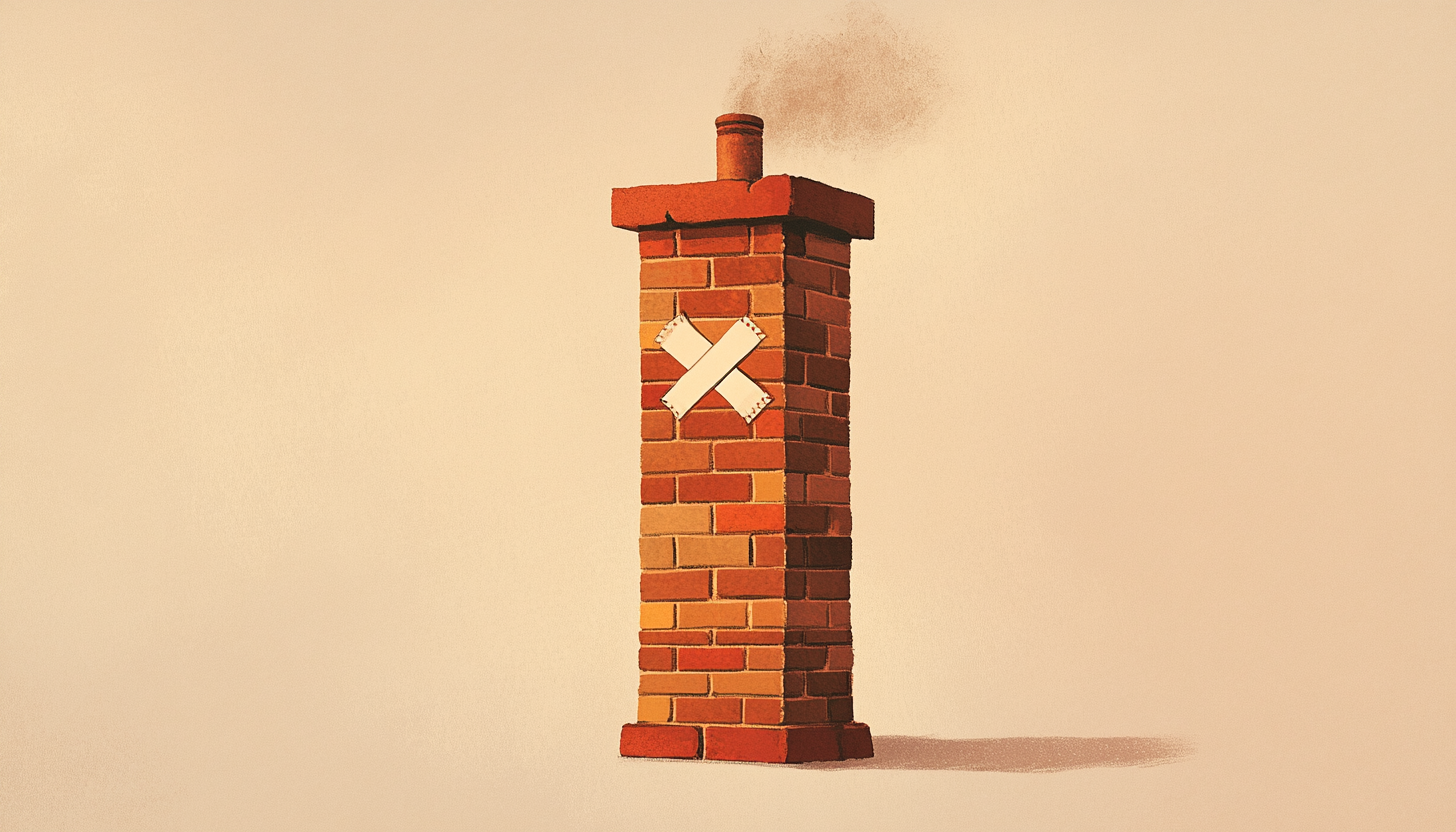CHIMNEY TIPS
6 SIGNS YOUR CHIMNEY NEEDS REPAIR
August 27, 2024

In this article, we'll guide you through the signs that your chimney needs repair and what steps you can take, so you can enjoy the warmth and comfort of your home again.
Common Chimney Problems
1. Creosote Buildup
Creosote is a highly flammable substance that forms on the inner walls of the chimney from burning wood. Excessive buildup can lead to chimney fires. Signs of creosote buildup include excessive soot, a pungent odor coming from your fireplace, and smoke inside the home. To prevent creosote buildup, annual chimney cleaning is essential.
2. Cracked or Damaged Flue
A cracked or damaged flue compromises the safety and efficiency of your chimney. Signs of a problematic flue include visible cracks, soot marks on your walls, and unusual noises when the fireplace is in use. Addressing these issues promptly with a professional inspection is crucial. Depending on the severity, the solution may involve flue repair or relining to restore your chimney's functionality and ensure safe operation.
3. Masonry Damage
Masonry damage can significantly affect the structural integrity of your chimney. Look for signs like crumbling bricks, deteriorating mortar, and water leakage. These issues indicate the need for prompt attention. Solutions include masonry repair to replace damaged bricks, tuckpointing to renew the mortar joints, and sealing to protect against further damage.
4. Damaged Chimney Cap
A damaged chimney cap can lead to several problems, such as water entry, debris in the fireplace, and animal intrusion. These signs indicate that your chimney cap is no longer providing the necessary protection. To resolve these issues, consider replacing or repairing the chimney cap to safeguard your chimney and ensure it functions properly.
5. Chimney Leaks
Chimney leaks can cause significant damage if left unchecked. Signs of leaks include water stains on walls, a damp smell, and a rusted damper. To address chimney leaks, consider waterproofing the chimney, fixing any damaged flashing, and replacing the chimney crown. These solutions will help prevent further water intrusion and protect the integrity of your chimney.
6. Draft Problems
Draft problems can lead to inefficient fireplace operation and safety concerns. Signs include smoke not rising properly and smoke coming back inside the home. Solutions involve checking and adjusting the damper, improving ventilation, and scheduling a chimney sweep and inspection. These steps help ensure proper airflow and an efficient fireplace.
When to Call a Professional
Safety Concerns
Chimney issues can pose serious safety concerns, including fire hazards, carbon monoxide risks, and structural dangers. These problems require immediate attention to prevent potential disasters.
To ensure your chimney is properly inspected and repaired, it's crucial to find a certified chimney professional. Look for experts with Chimney Safety Institute of America (CSIA) certification, as this credential ensures they have undergone rigorous training and adhere to industry standards.
Complex Repairs
Certain chimney issues necessitate complex repairs, such as flue relining, extensive masonry work, and cap and chase cover installation. These tasks require specialized skills and knowledge to ensure they are performed correctly.
Preventative Care
1. Annual Inspections
Level 1 Inspection
- Scope: The most basic inspection.
- Process: A visual examination of the readily accessible parts of the chimney, including the firebox, flue, and exterior structure.
- Purpose: To ensure the chimney is free of obstructions and combustible deposits, and that there are no visible signs of damage or deterioration.
- When to Use: Recommended annually for chimneys that have been regularly maintained and have no known problems or changes in use.
Level 2 Inspections
- Scope: A more detailed inspection than Level 1.
- Process: Includes everything in a Level 1 inspection, plus the inspection of accessible areas of the chimney and fireplace using video scanning or other tools to examine the internal surfaces and joints.
- Purpose: To check for hidden problems that might not be visible in a Level 1 inspection, such as internal damage, obstructions, or deposits within the flue.
- When to Use: Required when there have been changes to the system (such as a new fuel type or a relining), after a chimney fire or earthquake, or when a property is being bought or sold.
Level 3 Inspection
- Scope: The most comprehensive and invasive inspection.
- Process: Includes all the elements of Level 1 and Level 2 inspections, plus the removal of certain components of the chimney structure or the building to gain access to areas that need to be inspected. This may involve removing parts of the chimney crown, interior chimney wall, or other building materials.
- Purpose: To thoroughly investigate serious problems, ensure structural integrity, and identify safety hazards that cannot be seen without removing parts of the chimney or building.
- When to Use: Necessary when a Level 1 or Level 2 inspection indicates a hidden hazard and when more extensive investigation is needed to determine the condition and safety of the chimney system.
2. Regular Cleaning
3. Install a Chimney Cap
4. Use Dry, Seasoned Firewood
5. Install a Chimney Liner
Key Takeaways:
- Regular chimney inspections and cleanings are essential for preventing fire hazards and ensuring efficient operation.
- Addressing common issues like creosote buildup, flue cracks, and masonry damage promptly can prevent safety risks and costly repairs.
- Installing a chimney cap and using seasoned wood can significantly improve chimney performance and longevity.
- Professional installation and maintenance, including chimney liners and cap fittings, ensure that all work meets safety standards and building codes.
GET IN TOUCH
Whether you have questions, need assistance, or just want some advice, we're here to help. Fill out the form and let us know how we can assist you.
